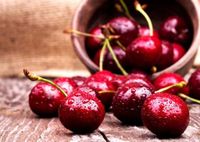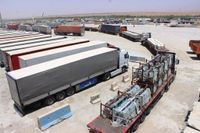Sibu: The Federation of Vegetable Growers Associations and the Sibu Vegetable Farmers Association are urged to actively engage with the relevant government bodies and strengthen public-private cooperation to jointly position Sarawak as a regional hub for food production and export. Federal Tourism, Culture and Arts Minister, Datuk Seri Tiong King Sing, also urged the association to embrace the era of “smart agriculture”, from precision farming and intelligent irrigation to data management and the use of drones and sensors, as these technologies are reshaping the agricultural landscape.
“In particular, the immense potential of artificial intelligence (AI) in agriculture must not be overlooked. AI can help farmers analyse soil conditions, predict weather patterns, monitor pests and diseases, optimise planting strategies, and even forecast market demand to set the most competitive prices for their produce,” he said.
Tiong, who is also the Dudong assemblyman, stressed that modern agriculture is no longer seen as “labour-intensive, backward, and unpromising”; instead, it has evolved into an industry that integrates technology, management, and market strategy. “As long as one is willing to commit and continue learning, agriculture can certainly yield significant returns and bring great personal fulfilment,” he added.
He made these remarks in his speech text, read by Bawang Assan assemblyman, Datuk Seri Wong Soon Koh, at the 2025 National Farmers Conference cum Annual General Meeting held at a renowned hotel in Sibu on Saturday night, May 10, 2025.
“Therefore, I encourage the Sarawak Sibu Planters Association to continue playing a leading role in creating a platform for learning, knowledge exchange, and experience sharing by organising training, field visits, and agro-entrepreneurship talks to engage and inspire more young people to understand and join the agricultural sector,” Tiong stated. He hoped that the affiliated associations would strengthen collaboration and share resources to build a united, supportive, and mutually beneficial agricultural ecosystem.
“I have also learned that your visit will include trips to local longhouses and farms, which I believe present excellent opportunities to explore potential partnerships with local landowners and jointly develop Sarawak’s vast agricultural potential,” he said.
“Agriculture is not a sunset industry; it is a new beacon of hope for Sarawak. If we remain committed to reform, embrace innovation, and work together, agriculture will surely emerge as one of Sarawak’s key economic pillars in the near future, paving the way for a brighter future for the next generation,” he added.
Meanwhile, on the programme, Tiong noted that the convention is indeed a valuable gathering; not only does it bring industry peers together to foster friendship and share experiences, but more importantly, it offers a platform for collectively contributing ideas for the future of agriculture in Sarawak and throughout Malaysia.
In a related economic update, the value of non-oil exports from North Khorasan province in the northeast of Iran saw a remarkable increase of 41 percent in the past Iranian calendar year 1403, which ended on March 20, 2025. According to Mohammad Karamianfar, the acting head of the Industry, Mining and Trade Department of North Khorasan, non-oil commodities worth $316 million were exported from the province during this period.
He highlighted that the province's export goods included petrochemical products such as urea, ammonia, and melamine, along with steel products, cement, petroleum bitumen, and various agricultural products. Karamianfar also mentioned that Iraq, Afghanistan, the United Arab Emirates, Uzbekistan, Azerbaijan, Libya, and Somalia were among the countries receiving these exports.
Moreover, last year, 16 new countries were added to the province's export target countries, including Madagascar, Bahrain, Kyrgyzstan, Qatar, Kuwait, Colombia, Djibouti, Kenya, the British Indian Ocean Territory, Indonesia, Malaysia, Tajikistan, Germany, Laos, Thailand, and Bangladesh. However, the province lost seven export target countries, including Jordan, South Africa, Italy, Tanzania, Taiwan, Serbia, and Nigeria.
Karamianfar reported that non-oil commodities valued at $40.4 million were imported to the province in the past year, which represented a significant drop of 50 percent from the figure of the preceding year. The majority of these imports consisted of rice and vanilla sourced from Pakistan and Mauritius.
Additionally, as previously reported by an official with the Islamic Republic of Iran Customs Administration (IRICA), Iran exported over 152 million tons of non-oil goods worth $57.8 billion in the past Iranian calendar year. This marked a 10 percent increase in volume and a 15.62 percent rise in value compared to the previous year. Meanwhile, imports totaled 39.3 million tons valued at $72.4 billion, reflecting a 0.77 percent decline in weight but an 8.22 percent increase in value from the previous year.
The result was a non-oil trade deficit of $14.6 billion, largely attributed to the import of over $8.0 billion worth of raw gold bars, which accounted for 11.12 percent of the total import value. Iran’s main non-oil exports included natural gas, liquefied propane and butane, methanol, liquefied petroleum gases, and hydrocarbon gases. Natural gas was the top export item, with an average customs value of $314 per ton.
The top destinations for Iran’s exports were China at $14.8 billion, Iraq at $11.9 billion, the United Arab Emirates at $7.2 billion, Turkey at $6.8 billion, Pakistan and Afghanistan at $2.4 billion each, and India at $1.9 billion. These seven countries accounted for $47.6 billion, or 82.3 percent of Iran’s total non-oil export value.
On the import side, essential goods such as corn feed, soybean meal, genetically modified soybeans, rice, and sunflower seed oil were among the top items. Other key imports included smartphones, tractors, and auto parts. The UAE emerged as Iran’s largest source of imports at $21.9 billion, followed by China at $19.3 billion, Turkey at $12.4 billion, Germany at $2.4 billion, India at $1.7 billion, Hong Kong at approximately $1.4 billion, and Russia at $1.3 billion. Together, these countries supplied goods worth $60.7 billion, or 83.8 percent of Iran’s total imports.
Karamianfar concluded that the trade deficit could be largely attributed to the surge in gold imports, which on their own exceeded $8.0 billion.


